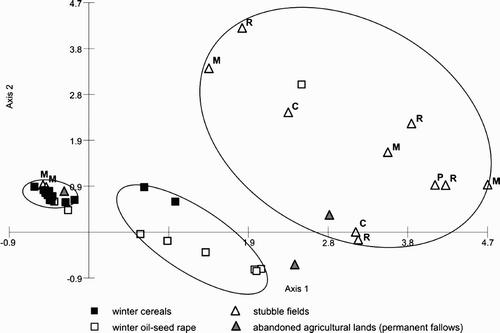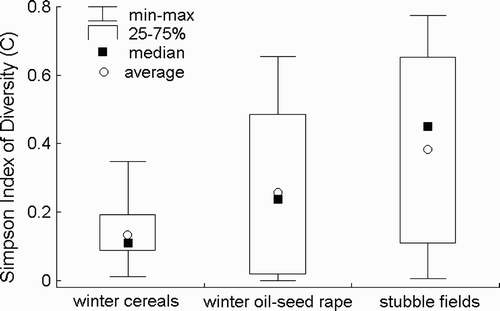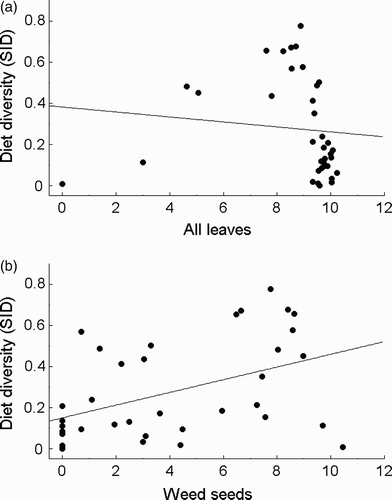Figures & data
Table 2. Comparison (in chronological order of published study) of autumn–winter diet composition of Grey Partridges Perdix perdix (expressed as percentage area/volume of six main components) in Europe and North America. Abbreviations: cer leav, cereal leaves; blf, broad-leaves; o. plant mat., other plant material; n.d., not determined; Aut., Autumn; Win., Winter; the same letter means pooled diet components: A, cereal leaves and broad-leaved leaves; B, weed seeds and cereal grains.
Table 1. The autumn–winter diet composition of Grey Partridges Perdix perdix in Poland based on the analysis of 36 faecal samples (0.5 g) from four land-cover types: winter cereals, winter oil-seed rape, stubble fields after cultivation of cereals (C), oil-seed rape (R), maize (M) and potato (P) and permanent fallow; in brackets the number of samples with a given item indicated; alife cycle of weeds: annual (A), biennial (B), perennial (P).
Figure 1. Comparison of the average (± 1 se) proportion of six main components in the diet of Grey Partridges Perdix perdix in winter cereals, winter oil-seed rape and stubble fields combined with permanent fallows. blf, broad-leaved.

Figure 2. Results of the dca analysis of Grey Partridges’ Perdix perdix diet composition indicating the breakdown in four land-cover type: winter cereals (▪), winter oil-seed rape (□), stubble fields (▵), permanent fallow (![]()

Figure 3. Diet diversity of Grey Partridges Perdix perdix expressed as the Simpson Index of Diversity (sid) in winter cereals, winter oil-seed rape and stubble fields combined with permanent fallows.

Figure 4. Relationship between the diet diversity (expressed as the Simpson Index of Diversity, sid) and the log-transformed number of (A) all leaves and (B) weed seeds recorded in the diet of Grey Partridges Perdix perdix based on the analysis of 36 faecal samples from four land-cover types.
